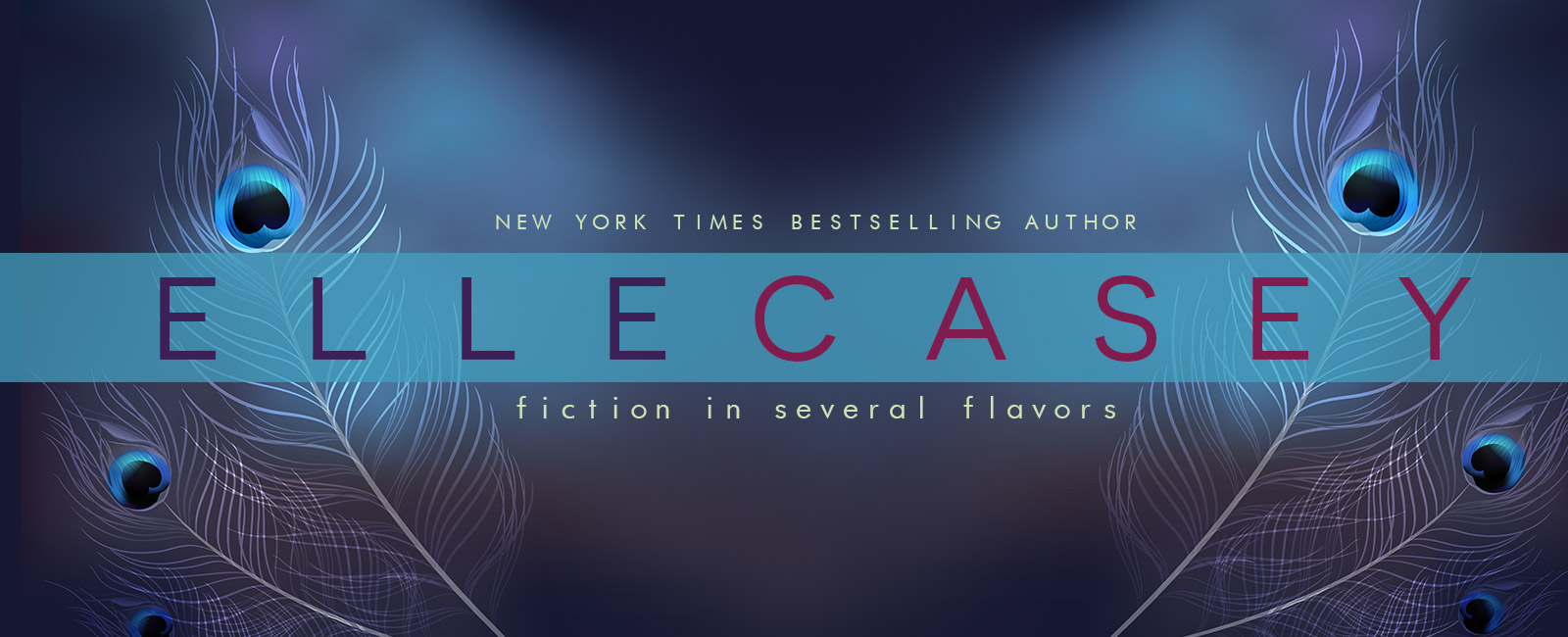I had a reader-fan write me and ask me for advice about formatting her paperback book that she just wrote. She's moving from reading to writing. Yay! Her questions led me to write this post.
As a reader, I used to walk into the bookstore, head over to the section that housed the books I like to read, and search for the biggest, fattest one they had. Why? Because I loooove to read, and I especially love to extend the experience out as much as possible. That also meant I'd search for series. If it was a series full of fat books, more's the better. Auto-buy.
When it came time to format my own books for paperback, I came at the project from a different perspective: I wanted to make my book as affordable for readers as possible. That means fewer pages is better since a printer charges me by the page (and hence, the reader pays by the page). To get fewer pages, it's very easy; you simply make the font smaller, use a font that's more compact, use smaller margins, smaller line spacing, and a bigger book footprint (9×6 instead of 8×5). I took an 89,000 word book and printed it out in just under 200 pages.
And then something weird happened.
Readers complained. They complained that the book was too short. I tried to explain that it wasn't short, it was just small, but they didn't agree. They didn't listen to my discussion of word count and a comparison of my book's word count and the word count of a bigger, fatter book on the same shelf in the bookstore.
Confused and frustrated, I conducted an informal poll on my Facebook page. I asked my readers this question: Would you pay more for a book that was fatter, knowing it had the same word count as a book that was thinner or smaller? I explained the conundrum of an author/publisher who was trying to make her books more affordable, so they would understand the issue.
You know what they said? Every single person responded that they'd happily pay more for a bigger book, even while knowing it wasn't any longer word-wise than another book. Many said they would feel like they were getting more for their money, even while admitting it made no rational sense.
I also took a stroll over to my bookshelf and pulled off a few titles that are in the same genre as the book I had just published. I was shocked and appalled at what I found in there. Huge fonts, massive line spacing and margins so big I could have taken classroom notes in them. No wonder I read these books so quickly! They weren't nearly as “big” as I thought they were when I bought them. All this wasted space that should have had words in them was just empty. I paid for that emptiness, when all along I thought I was paying for words.
Did you know that Amazon puts “actual page count” on the ebook when there is a paperback of the same book? They use the paperback page count to show readers what they're buying. In essence, just by tweaking the formatting of my paperback, I can have an ebook that says 350 actual pages or I can have an ebook that says 195 actual pages, even though it's the exact same book. Which one would you buy?
I wanted to fight the system, but I couldn't. Readers told me what they wanted, and even though my heart was in the right place before, I had to give them what they were asking for now. I also know that if I decided to become a one-woman crusade against selling empty space to readers, that I would get punished for it. People who didn't realize what I was trying to do would proclaim me the ripoff author who charges way too much money for books that are tiny.
I went back in a re-formatted my paperback to increase the page count by about 125 pages. I made the margins smaller, the line spacing bigger, the font bigger. I caved to the pressure from the publishing industry and raised the price of my book to cover the cost of the additional pages. Lo and behold, the readers stopped complaining about it being short. And I sold more of them.
I guess you could say that I'm outing myself on this blog post, but I've already done that on my Facebook page. It frustrates me that I feel like I've been forced into making readers pay more. I also posted this because I wanted you readers to know that you should NOT trust page counts given by Amazon or publishers. You should not trust the width of the spine of your book. The only real measure of a book's length is the word count, and even then you have to know whether the word count includes the front and back matter and any sample chapters of other books included. That could add thousands of words to the length and it wouldn't really be the story they were measuring.
I believe that all authors should include the word count of their manuscript in the description so readers really know what they're buying. I've already done this for several of my books, but I will be doing it for all my books in the future. We could change this practice in publishing, people. Speak out! Tell authors and publishers what you want! If you need some inspiration, go take a look at what's on your bookshelf. Compare the fonts and the margins and see how much empty space you've purchased in your reader lifetime. Oh, and try not to think about how many other books you could have purchased with all that extra money. 🙂




Great article! You know I never really thought about page count. I’ve always just taken the page count for granted and thought that’s approximately how many pages I really get so yeah that is pretty shady of a lot of publishers and authors but on the other hand I think you did the right thing giving your readers what they wanted. My eyesight has gotten pretty bad so for me I’d rather pay more to be able to read and enjoy a book without having eyestrain or headaches to go along with it. I do like that you’re going to start including your page counts but you also put a lot of hard work into your writing, it takes extra work to format it, to make it better and easier to read so I’m pretty sure everyone takes that into account. Of course with ebooks that’s pretty much a nonissue now because we can make our own fonts as big as we want so what you’re doing is a good idea.
But now that you mention it I have read some 300 plus page books that just didn’t feel like 300 pages, they went so fast and not because of the awesome story like yours do. You could write a book the size of Stephen KIng’s The Stand and it would still feel way too short too me – sort of the whole theory of relativity going on and how time flies when you’re having fun. On the other hand I’ve read some books that were 200 pages that seemed so much longer. I’m going to start paying more attention to books and how the words are spaced and arranged. The only time I ever feel ripped off is when an author ends their book at the 50% mark or 70% mark & then puts a bunch of sample chapters at the end. I don’t mind it so much if I get a good full story but when I buy a book that says 250 pages and there’s really less than 150 it can be pretty annoying not to mention some authors just keep writing smaller and smaller books while the sample chapters get larger and larger. Every once in a while it’s okay but when it just starts becoming normal then I quit buying from that author. I’ve only had that happen twice so far though.
Thanks for your comments, Jamie. I’m with you on the added junk in a book making it look longer. I remember getting to the end of a book at 70% on my Kindle and I was like … whaaaat? Shenanigans, that’s what that is.
Interesting post, Elle. BTW, I really enjoyed your Rebel series.
I’m a writer too and my latest novel is kinda long, so I was thinking about formatting it for paper with a smaller font size, etc, just for the reason you name. To make the book more affordable. I just cringe at the prices I have to charge for a trade paperback. But if I’d squeezed the font size, the book would have been difficult to read. Hard on the eyes. So I gave up on that idea real fast. Now I’m glad I did. I hadn’t thought about the perceived value to the reader of a thicker book.
Yup. I had a few readers tell me they were happy for bigger font for the reason you just mentioned.